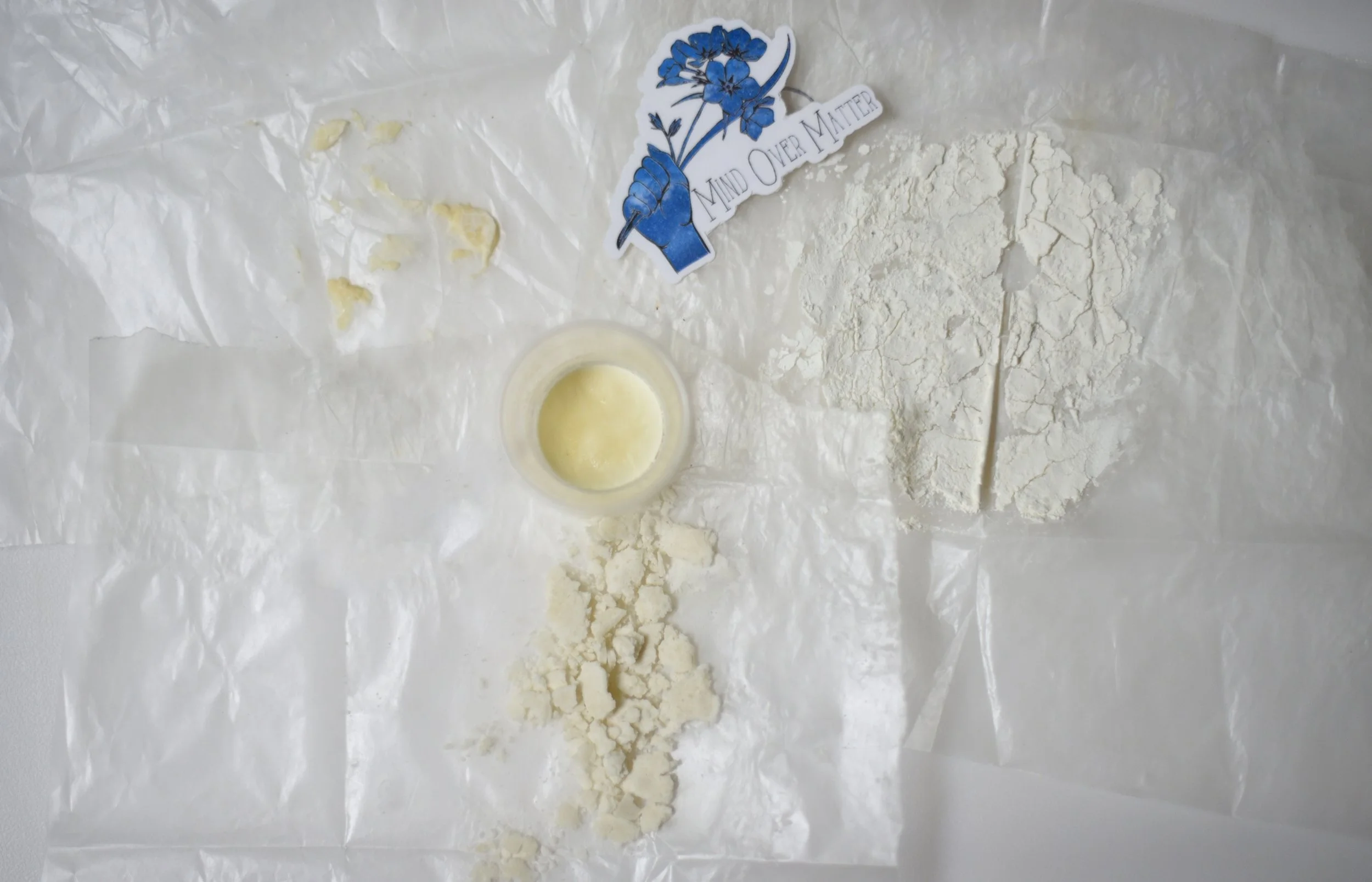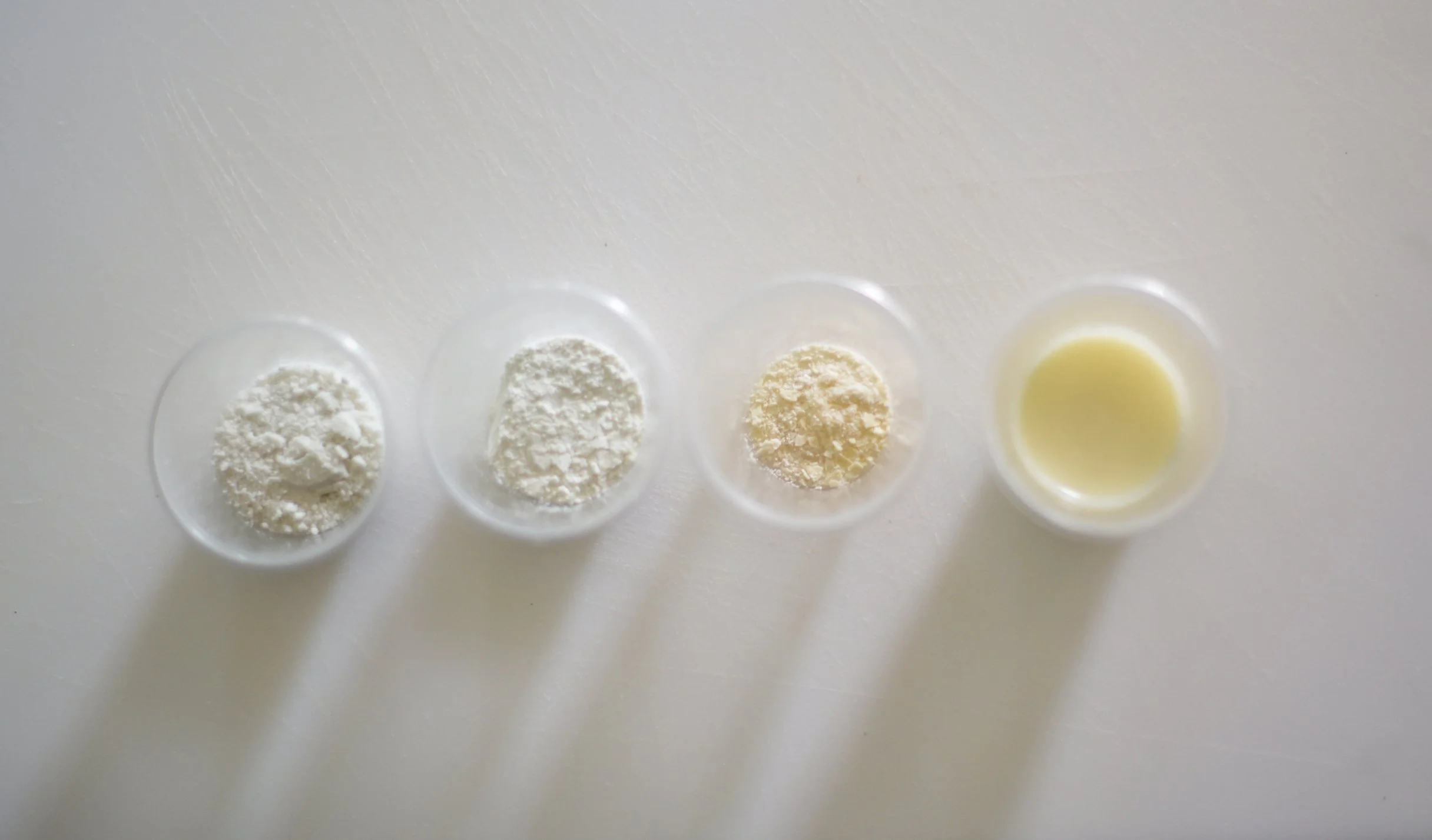Here is a good example of three breastmilk preservation method recipes. Images are taken in natural light with a DSLR on Manual mode.
In the cup, I have the same batch of breastmilk used for the experiment so you can compare the examples of methods WITH the actual milk. The top image is after it has dried (you can see it preserved on my other blogs or YouTube), and the bottom is after is has been crushed.
Here we have my method on the left. It doesn't make nearly the amount the other two do, but remember, it also doesn't have nearly the filler "substances." Also, take note, that my method is not meant to be dried out, I did so for the sake of keeping the experiment fair. (You can also see my method in the wet form as it is used via a previous post.)
The second, toward the bottom, is the CA method. You can read more about this method in previous posts.
Lastly, the famous MM breastmilk preservation powder recipe on the right. You can read more about this method in a previous post as well. - As you see, it retains the least amount of actual breastmilk color out of the methods shown. I still don't understand why this became the "go-to" recipe for breastmilk preservation. It CLEARLY has pigment in it. It made it big because the lady who started creating it didn’t tell the whole truth or the full result of the method, and didn’t care while the people in her group blindly followed.
This is why you should ask what method your DNA artist is using, and ask them to show you the method of preservation with water. This way, you can make an informed choice about your keepsake, asking this gives you a great idea as to how much your milk will actually be coloring your piece. While they don’t owe you their recipe, if they don’t want to tell you ANYTHING, that is a big red flag.
Famous powder/dust, the CA method, my method (dried), and the actual milk used for this experiment.


